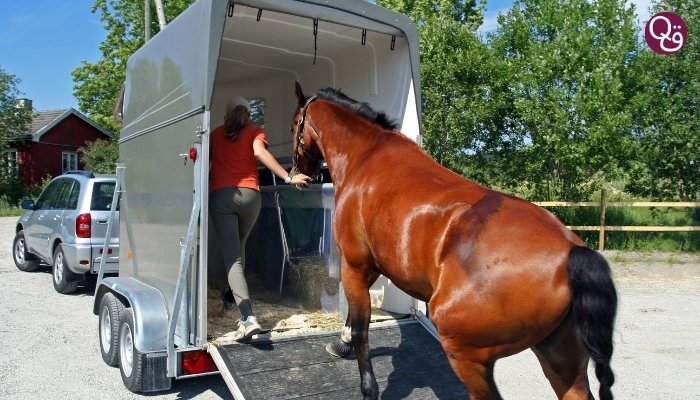Riding horses can be a difficult experience, but selecting the correct float can make a significant difference. Whether your trip is for a competition, relocation, or a day excursion, making sure your horse moves securely and comfortably is crucial.
A well-designed float can reduce stress for your horse and you and improve the overall journey. This page looks at the necessary factors to make horse travel more pleasant and the appropriate float choice.
1. Know the Particular Needs of Your Horse
Every horse is distinct, so its comfort requirements for travel vary. Some need more room for their stature, while others are more prone to stress. Knowing your horse’s particular needs is the first step in selecting the correct float.
Consider their size, attitude, and health, among other things. Horses with joint problems, for example, could need more padding or a smoother ride.
Considering these elements will help you to make sure your horse stays comfortable throughout the journey. If you are in the market for reliable options, exploring horse floats for sale will provide a range of models designed to meet diverse equine needs.
2. Select the appropriate float size
Choosing the appropriate-sized float is crucial for your horse’s comfortable travel. An overly small float might create discomfort and restrict the horse’s movement, which can induce anxiety, physical stress, or harm.
Alternatively, an overly large float can make it more difficult for the horse to stabilize during the ride, which would be a startling sensation. After determining the height and length of your horse, select a float that will allow enough room for them to comfortably stand, turn around, and lie down.
Appropriate ventilation on the float will also guarantee that your horse gets fresh air during the ride.
3. Choose a smooth ride of high quality
The comfort of your horse depends greatly on the ride quality. Particularly on longer excursions, a rough, bumpy road can induce physical tension and worry. Search for a float with a nicely built suspension system.
The suspension smooths out the shocks and vibrations from the road and improves your horse’s ride. The float’s floor should also be padded and non-slip to reduce discomfort from the hard surface. A quality float will reduce the effect of road bumps and improve the comfort of the travel.
4. Temperature Control and Ventilation
Horses are quite sensitive to air quality and temperature variations; proper ventilation during your float is important. A well-ventilated float helps your horse stay from overheating or feeling stuffy during the travel by allowing air to circulate freely.
Depending on the temperature, find floats with windows or vents that allow airflow. In hot or humid conditions specifically, proper ventilation is crucial since it avoids heat exhaustion. In colder locations, make sure your float is correctly insulated to keep your horse comfortable without allowing too strong cold drafts.
5. Install Dividers for Safety
Prioritizing safety is important when traveling with horses; hence, installing divisions or partitions inside the float avoids mishaps. These dividers reduce the chance of injury from horses becoming agitated or kicking one another.
For a horse that travels alone, the partition can provide additional support to prevent them from sliding or falling over during the journey. Sturdy and flexible partitions will allow you to adapt the area to fit the requirements of your horse.
Since your horse will feel steadier and more contained during the ride, a safe, well-considered partition system reduces stress and anxiety. If you are considering upgrading your transport, explore options for horse floats for sale that come equipped with advanced safety features like adjustable partitions.
6. Plan for Rest Stops and Hydration
Horses find lengthy distances to be exhausting; hence it’s crucial to schedule many rest stops along the way. Long-distance riding requires horses to stretch their legs, sip water, and sometimes graze.
Furthermore, especially if you are driving for a long distance, consider your path, including rest stops. This will help your horse to heal, therefore reducing the likelihood of discomfort or dehydration.
DISCLAIMER: The images, videos, and logos featured on this page are for informational purposes only, and they belong to their respective owners. We make efforts to credit and source appropriately. If you discover your image displayed here without authorization, kindly contact us with relevant details and a link to the image, and we will promptly address your concerns.
Author
-
I am Andrew Reed, an author and writer at Qatariscoop.com, where I focus on delivering insightful reporting and creating engaging content for readers in Qatar and beyond.
View all posts




















